Discover the career path of John Lennon, from the first major opportunity to industry-changing achievements.
John Lennon was a highly influential English singer-songwriter, musician, and peace activist. He achieved worldwide recognition as a founder, co-lead vocalist, and rhythm guitarist for the Beatles, one of the most successful and influential bands in music history. Lennon's songwriting collaboration with Paul McCartney is renowned as the most successful musical partnership of all time, producing a vast catalog of iconic and enduring songs. Beyond his musical achievements, Lennon used his platform to advocate for peace and social change, becoming a prominent voice for anti-war movements.
1917: Homage to Marcel Duchamp
In 1968, John Lennon created a ready made black bike (an apparent homage to Marcel Duchamp and his 1917 Bicycle Wheel) for his 'You Are Here' art exhibition.
September 1956: Formation of the Quarrymen
In September 1956, John Lennon, at the age of 15, formed the skiffle group called the Quarrymen, named after Quarry Bank High School.
1956: Formation of The Quarrymen
In 1956, John Lennon became involved in the skiffle craze and formed The Quarrymen as a teenager.
1956: First Guitar
In 1956, John Lennon's mother, Julia, bought him his first guitar, an inexpensive Gallotone Champion acoustic, setting the stage for his musical career.
1957: The Quarrymen's Performances
By the summer of 1957, The Quarrymen were performing a mix of skiffle and rock and roll, showcasing their spirited sets.
1960: The Quarrymen Evolved into The Beatles
In 1960, The Quarrymen evolved into the band that would become globally known as The Beatles.
1960: Formation of The Beatles
In early 1960, Lennon, McCartney, Harrison, and Sutcliffe became "The Beatles", marking the official start of the iconic band.
April 1961: Second Hamburg Residency
In April 1961, The Beatles accepted their second residency in Hamburg, continuing their musical development and performances.
November 1961: The Beatles meet Brian Epstein
In November 1961, The Beatles were introduced to Brian Epstein after a midday concert at Liverpool's Cavern Club. Epstein later became their manager.
April 1962: Third Hamburg Residency
In April 1962, The Beatles embarked on their third residency in Hamburg, further honing their skills and solidifying their lineup.
October 1962: Release of "Love Me Do"
In October 1962, The Beatles released their first single, "Love Me Do", which reached No. 17 on the British charts.
February 1963: Recording of Please Please Me
On February 11, 1963, The Beatles recorded their debut album, Please Please Me, in under 10 hours. Lennon was suffering from a cold.
1963: "Hello Little Girl" Top 10 Hit
In 1963, "Hello Little Girl", a song written by John Lennon, became a UK top 10 hit for the Fourmost.
1963: Collaboration with McCartney on "I Want to Hold Your Hand"
In 1963, John Lennon's jamming on a piano with Paul McCartney led to the creation of The Beatles' first US number one hit, "I Want to Hold Your Hand".
1963: Recording of Please Please Me album
In 1963, during the recording of The Beatles' debut album, Please Please Me, Lennon's voice was compromised by a cold, particularly affecting the final track, "Twist and Shout". Lennon felt he was just screaming the song and strained his vocal cords. George Martin, The Beatles' producer, often used techniques like double-tracking to alter Lennon's voice at Lennon's request.
1963: Mainstream Success in the UK
The Beatles achieved mainstream success in the UK early in 1963. John Lennon was on tour when his first son, Julian, was born in April.
February 1964: US Debut on The Ed Sullivan Show
In February 1964, The Beatles made their historic US debut appearance on The Ed Sullivan Show, marking their breakthrough to international stardom.
1964: Acquisition of Mellotron Keyboard
In 1964, John Lennon became one of the first British musicians to acquire a Mellotron keyboard, though it was not heard on a Beatles recording until 1967.
1964: Publication of "In His Own Write"
In 1964, John Lennon's book "In His Own Write" was published, featuring a mix of short stories, poetry, plays, and drawings.
1965: Publication of "A Spaniard in the Works"
In 1965, "A Spaniard in the Works" was published. It formed the basis of the stage play The Lennon Play: In His Own Write, co-adapted by Victor Spinetti and Adrienne Kennedy.
1965: Lennon's "Help!" expresses his feelings
In 1965, John Lennon felt concerned that fans at Beatles concerts couldn't hear the music due to screaming, impacting the band's musicianship. His song "Help!" reflected his feelings. He also felt he was subconsciously seeking change and had put on weight. In March 1965, Lennon and Harrison unknowingly took LSD after a dentist spiked their coffee at a dinner party, leading to a frightening experience.
March 1966: Lennon's remark on Christianity
In March 1966, John Lennon remarked in an interview that Christianity would decline and the Beatles were more popular than Jesus. The comment, initially unnoticed in England, sparked outrage in the US when quoted months later, leading to record burnings, Ku Klux Klan activity, and threats against Lennon, influencing the band's decision to stop touring.
August 1966: Lennon films How I Won the War
After the Beatles' final concert on August 29, 1966, John Lennon filmed the anti-war black comedy "How I Won the War", marking his only appearance in a non-Beatles feature film.
1966: This is Not Here (1966) part of Blue Room Event (1966)
In 1966, Lennon's 'You Are Here' show was conceived as a response to Ono's conceptual art piece 'This is Not Here (1966)' that was part of her Fluxus installation of wall text pieces called 'Blue Room Event (1966)'.
1967: Funding of Ono's "Half-A-Room" Art Exhibition
In 1967, John Lennon anonymously funded and participated in Yoko Ono's art exhibition "Half-A-Room" held at Lisson Gallery.
1967: Release of "Strawberry Fields Forever" and Sgt. Pepper's Lonely Hearts Club Band
In 1967, John Lennon increased his LSD use, and his continuous use of the drug brought him close to erasing his identity. The year 1967 also saw the release of "Strawberry Fields Forever" and the Beatles' landmark album "Sgt. Pepper's Lonely Hearts Club Band", which revealed lyrics by Lennon that contrasted strongly with the simple love songs of the group's early years.
1967: Use of Mellotron on "Strawberry Fields Forever"
In 1967, the Mellotron keyboard, acquired by John Lennon in 1964, was first heard on a Beatles recording, "Strawberry Fields Forever".
February 1968: The Beatles travel to India
In February 1968, led by Harrison and Lennon's interest, the Beatles traveled to the Maharishi's ashram in India for further guidance. While there, they composed most of the songs for their double album "The Beatles".
May 1968: Lennon and Ono's Night Recording
In May 1968, while Cynthia Lennon was on holiday, John Lennon invited Yoko Ono to visit his home. They spent the night recording what would become the "Two Virgins" album and, according to Lennon, "made love at dawn".
1968: Recording experimental music with Ono
Between 1968 and 1969, John Lennon and Yoko Ono recorded three albums of experimental music together: Unfinished Music No. 1: Two Virgins, Unfinished Music No. 2: Life with the Lions and Wedding Album.
1968: Opening of "The Lennon Play: In His Own Write"
In 1968, "The Lennon Play: In His Own Write" opened at The Old Vic. John Lennon and Yoko Ono attended the opening night performance, their second public appearance together.
1968: Formation of ABKCO Industries
In 1968, Allen Klein formed ABKCO Industries as an umbrella company to ABKCO Records.
1968: 1968 comic drawing
In 1968, John Lennon drew a comic for the macrobiotic magazine Harmony.
1968: The White Album photo collage creation
In 1970, Lennon made The Complete Yoko Ono Word Poem Game where he used the portrait photo of himself that was included in the packaging of the 1968 The Beatles LP (aka The White Album) and cut it into 134 small rectangles to be reassembled in any order.
1968: You Are Here Art Exhibition
In the summer of 1968, John Lennon began showing his painting and conceptual art at his You Are Here art exhibition held at Robert Fraser Gallery in London. The show, that was dedicated to Ono, included a six foot in diameter round white monochrome painting called You Are Here (1968).
September 1969: Lennon leaves the Beatles
On September 20, 1969, John Lennon left the Beatles, but agreed not to inform the media while the group renegotiated their recording contract.
1969: May Pang Hired by ABKCO
In 1969, Allen Klein hired May Pang as a receptionist in ABKCO.
1969: Appearance in Self-Portrait Art Film
In 1969, John Lennon appeared in Yoko Ono's Fluxus art film "Self-Portrait", consisting of a single forty-minute shot of Lennon's penis, premiered at the Institute of Contemporary Arts.
1969: Wedding Album drawings
In 1969, John Lennon drew fine art prints inside the sleeve of his Wedding Album.
1969: Formation of Plastic Ono Band and Bed-In for Peace
In 1969, John Lennon started the Plastic Ono Band with Yoko Ono, held the two-week-long anti-war demonstration bed-in for peace, and left the Beatles to embark on a solo career.
1969: Lennon Writes Skit for "Oh! Calcutta!"
In 1969, John Lennon wrote "Four in Hand", a skit based on his teenage experiences, for Kenneth Tynan's play "Oh! Calcutta!"
1969: Allen Klein appointed as Apple's chief executive
In early 1969, Allen Klein was appointed as Apple's chief executive by John Lennon, Harrison and Starr, but McCartney never signed the management contract.
January 1970: Bag One Lithographs Exhibition
On 15 January 1970, John Lennon's "Bag One" lithographs exhibition opened at Eugene Schuster's London Arts Gallery. The show was raided by police officers 24 hours later, who confiscated 8 of the 14 lithos on the grounds of indecency.
April 1970: McCartney publicises his departure
In April 1970, John Lennon was outraged that McCartney publicized his own departure on releasing his debut solo album.
June 1970: GRAPEFRUIT FLUXBANQUET
From 18 April to 12 June 1970, John Lennon and Yoko Ono presented a series of Fluxus conceptual art events and concerts at Joe Jones's Tone Deaf Music Store called GRAPEFRUIT FLUXBANQUET.
December 1970: Lennon's interview with Rolling Stone
In a December 1970 interview with Jann Wenner of Rolling Stone magazine, John Lennon revealed his bitterness towards McCartney.
1970: Beatles Break-Up
Following the Beatles' break-up in 1970, John Lennon remained consistently friendly with Ringo Starr, but his relationships with Paul McCartney and George Harrison varied.
1970: Break-up of The Beatles
The Beatles officially broke up in 1970, marking the end of an era for the iconic band.
January 1971: Lennon writes "Power to the People"
In January 1971, Tariq Ali's revolutionary political views inspired John Lennon to write "Power to the People", reversing his non-confrontational approach from "Revolution".
1971: Creation of "Erection" Experimental Art Film
In 1971, John Lennon made an experimental art film called "Erection", edited on 16 mm film by George Maciunas. The film uses the songs "Airmale" and "You" from Ono's 1971 album "Fly" as its soundtrack.
1971: Release of Imagine album
In 1971, eager for commercial success, John Lennon released the album "Imagine". The album's title track later became an anthem for anti-war movements, while the song "How Do You Sleep?" was a musical attack on McCartney. Lennon addressed his demeaning treatment of women in "Jealous Guy".
1971: Lennon's Ties with London Anti-War Activists
In 1971, the final 10 documents in John Lennon's FBI file reported on his ties with London anti-war activists. These documents were later released in December 2006.
February 1972: Nixon Administration's Attempt to Deport Lennon
In February 1972, Republican Senator Strom Thurmond suggested that the Nixon administration should deport John Lennon as a "strategic counter-measure" against his anti-war activities which Nixon believed could cost him his reelection.
August 1972: Benefit concerts at Madison Square Garden
On August 30, 1972, John Lennon and Yoko Ono gave two benefit concerts with Elephant's Memory and guests in New York in aid of patients at the Willowbrook State School mental facility at Madison Square Garden, which were his last full-length concert appearances.
1972: Bloody Sunday and Protest Songs
Following the Bloody Sunday incident in Northern Ireland in 1972, John Lennon and Yoko Ono wrote two songs protesting British presence and actions in Ireland for their Some Time in New York City album: "The Luck of the Irish" and "Sunday Bloody Sunday".
1972: Release of Some Time in New York City
In 1972, John Lennon and Yoko Ono released "Some Time in New York City", a collaboration with the New York band Elephant's Memory, featuring songs about women's rights, race relations, Britain's role in Northern Ireland, and Lennon's green card difficulties.
1972: Contribution to Gay Liberation Book
In 1972, John Lennon contributed a drawing and limerick titled "Why Make It Sad to Be Gay?" to Len Richmond and Gary Noguera's "The Gay Liberation Book".
April 1973: Formation of Nutopia
On 1 April 1973, John Lennon and Yoko Ono held a press conference at the New York City Bar Association, announcing the formation of Nutopia, described as a place with "no land, no boundaries, no passports, only people," and requesting political asylum in the US.
November 1973: Release of Mind Games and contributing to Ringo album
In November 1973, John Lennon and Yoko Ono decided to separate, and Lennon released "Mind Games", credited to the "Plastic U.F.Ono Band". Lennon also contributed "I'm the Greatest" to Starr's album Ringo.
October 1974: Release of "Walls and Bridges" album
In October 1974, John Lennon released the album "Walls and Bridges", which featured "Whatever Gets You thru the Night" with Elton John and became Lennon's only solo single to top the US Billboard Hot 100 during his lifetime. Another single, "#9 Dream," was also released from the album.
December 1974: Harrison's Plea to Ford
In December 1974, George Harrison visited the White House and asked President Gerald Ford to intercede in John Lennon's deportation case.
December 1974: Dark Horse tour Incident
In December 1974, during George Harrison's Dark Horse tour in New York, John Lennon agreed to join him on stage but failed to appear after an argument over Lennon's refusal to sign an agreement to dissolve the Beatles' legal partnership.
1974: Joint Recording with McCartney
In 1974, John Lennon and Paul McCartney recorded music together, later bootlegged as "A Toot and a Snore in '74", before eventually growing apart once more.
1974: Alcohol-fueled incidents and producing Nilsson's album
In early 1974, John Lennon was drinking heavily. In March 1974, two incidents occurred at The Troubadour club: Lennon stuck an unused menstrual pad on his forehead and scuffled with a waitress, and Lennon and Nilsson were ejected from the same club after heckling the Smothers Brothers. Lennon decided to produce Nilsson's album Pussy Cats. In April 1974, Lennon had produced the Mick Jagger song "Too Many Cooks (Spoil the Soup)".
January 1975: Elton John's "Lucy in the Sky with Diamonds" tops Billboard chart featuring Lennon
In January 1975, Elton John's cover of "Lucy in the Sky with Diamonds", featuring John Lennon, topped the US Billboard Hot 100 singles chart. Lennon was credited on the single as "Dr. Winston O'Boogie".
1975: Career Break
From 1975 until shortly before his death, John Lennon took a career break and was content to sit back as long as Paul McCartney was producing what Lennon saw as mediocre material.
1975: Deportation Order Overturned
In 1975, the deportation order against John Lennon was overturned.
April 1976: SNL Reunion Offer
During Paul McCartney's final visit in April 1976, John Lennon watched the episode of Saturday Night Live with Lorne Michaels' offer of $3,000 for the Beatles to reunite on the show.
1976: Lennon's last recording session before hiatus
In 1976, John Lennon recorded "Cookin' (In the Kitchen of Love)" for Ringo Starr's album 'Ringo's Rotogravure' in June, marking his last recording session until 1980 during his five-year hiatus from the music industry.
October 1980: Release of "(Just Like) Starting Over"
In October 1980, John Lennon emerged from his hiatus and released the single "(Just Like) Starting Over", marking his return to the music industry.
December 1980: Support for Sanitation Workers
On 5 December 1980, John Lennon's last act of political activism was a statement in support of the striking minority sanitation workers in San Francisco. He and Ono planned to join the workers' protest on 14 December.
1980: Last recording session
In 1980, John Lennon resumed his music career after a five-year hiatus.
1980: Return to Studio and "Coming Up"
In 1980, John Lennon returned to the studio and took notice of Paul McCartney's "Coming Up", jokingly complaining that he could not get the tune out of his head.
1980: Return to Music and Death
In 1980, after a five-year hiatus, John Lennon returned to music with the album Double Fantasy, a collaboration with Yoko Ono. Tragically, he was shot and killed by Mark David Chapman three weeks after the album's release.
1992: Publication of "Ai: Japan Through John Lennon's Eyes: A Personal Sketchbook"
In 1992, "Ai: Japan Through John Lennon's Eyes: A Personal Sketchbook", featuring Lennon's illustrations of Japanese words, was published.
1994: Beatles Reunion and "Free as a Bird"
In 1994, the three surviving members of the Beatles reunited and began working on completing two of John Lennon's home recording demos. One of them was "Free as a Bird."
1995: Beatles Reunion and "Real Love"
In 1995, the three surviving members of the Beatles continued working on completing John Lennon's home recording demos and released "Real Love" as Beatles single.
1997: Establishment of John Lennon Scholarships
In 1997, Yoko Ono and the BMI Foundation established an annual music competition programme and the BMI Foundation's John Lennon Scholarships for songwriters of contemporary musical genres to honour John Lennon's memory and his large creative legacy.
1998: Release of John Lennon Anthology
In 1998, two tracks from John Lennon's December 1971 performance at the "John Sinclair Freedom Rally" appeared on John Lennon Anthology.
1999: Publication of "Real Love: The Drawings for Sean"
In 1999, "Real Love: The Drawings for Sean" was published, featuring John Lennon's drawings for his son, Sean.
2000: Publication of The Beatles Anthology
In 2000, "The Beatles Anthology" was published. It presented examples of John Lennon's writings and drawings.
2013: Downtown Music Publishing Agreement
In 2013, Downtown Music Publishing signed a publishing administration agreement for the US with Lenono Music and Ono Music, representing John Lennon's solo works, including songs like "Imagine", "Instant Karma (We All Shine On)", "Power to the People", "Happy Xmas (War Is Over)", "Jealous Guy", and "(Just Like) Starting Over".
2023: Release of "Now and Then"
In 2023, "Now and Then", a song worked on by the surviving members of The Beatles using a John Lennon demo, was released and topped the UK charts. It was dubbed "the last Beatles song".
Mentioned in this timeline
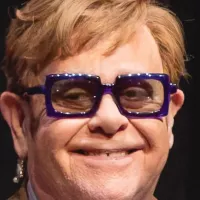
Sir Elton John is a highly successful British singer songwriter...
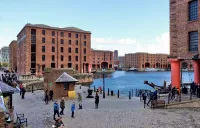
Liverpool is a port city and metropolitan borough located in...
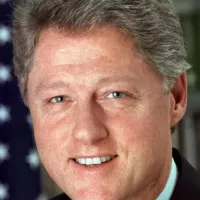
Bill Clinton the nd U S President - served as...
Nigeria is a West African nation the most populous in...
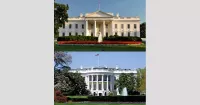
The White House located at Pennsylvania Avenue NW in Washington...
California is a U S state on the Pacific Coast...
Trending
26 minutes ago Winter Weather Advisory Issued: Freezing Rain, Icy Roads Expected in North Carolina
27 minutes ago Rome man arrested after shooting at car in Verona, New York.
27 minutes ago Space Weather Monitoring: NOAA Reports, Saskatchewan Researching Storms, Local Impact Variances Noted.
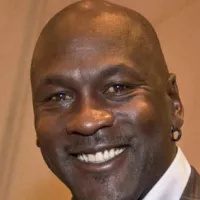
28 minutes ago Michael Jordan's 23XI Racing Faces NASCAR in Antitrust Trial, Potentially Shaking Up Motorsports
1 hour ago Snowstorm Expected to Hit Philadelphia and Pittsburgh on Tuesday: Forecast Details
1 hour ago Bret Buganski departs WCPO-TV after three years as anchor, expressing gratitude.
Popular
Aftyn Alyssa Behn is an American politician currently serving as...
Matt and Ross Duffer known as the Duffer Brothers are...

XXXTentacion born Jahseh Dwayne Ricardo Onfroy was a controversial yet...

Stranger Things created by the Duffer Brothers is a popular...
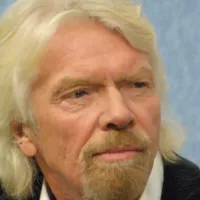
Richard Branson is a prominent English business magnate best known...
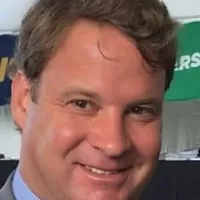
Lane Kiffin is an American football coach currently serving as...





